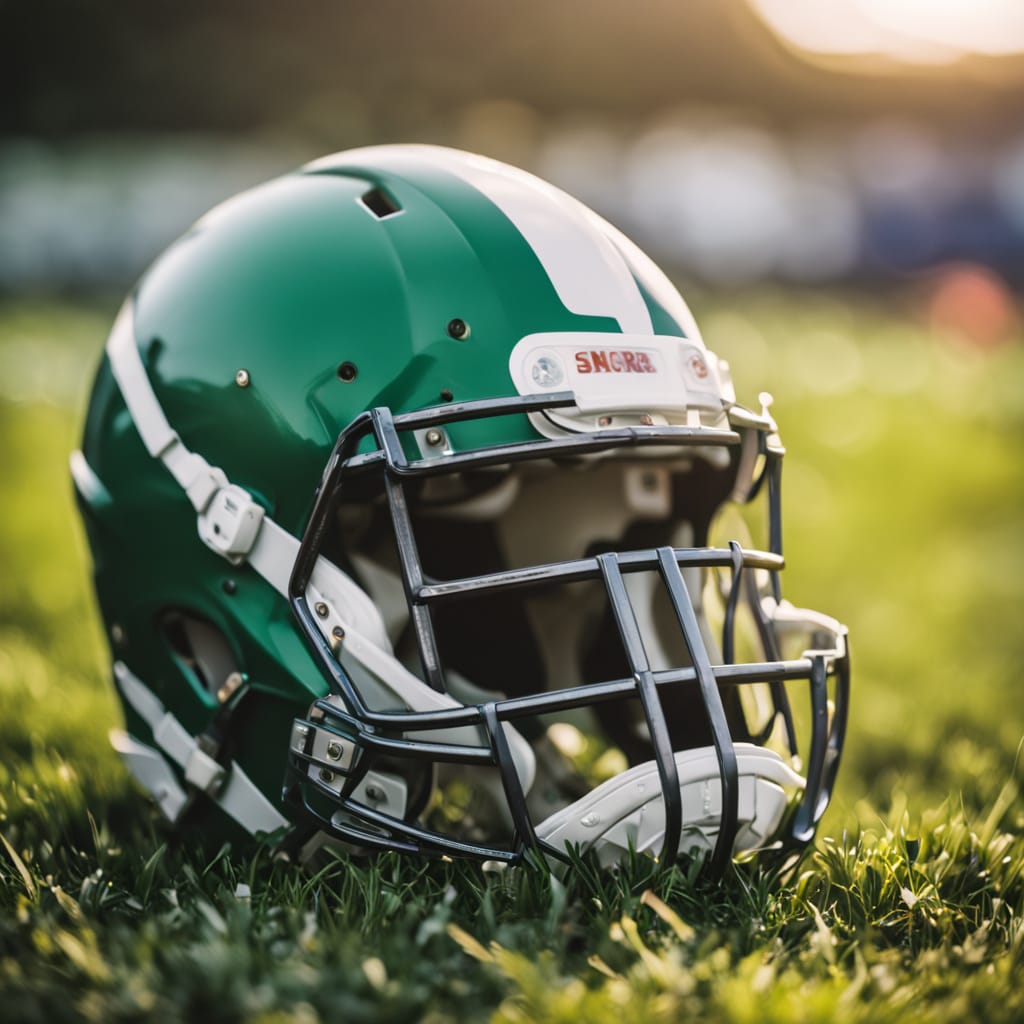Protective Gear in Sports
Protective Gear in Sports: A Comprehensive Guide

In the world of athletics, safety is paramount. The use of protective gear in sports has evolved significantly over the years. This evolution stems from a growing concern for the well-being of athletes. Protective gear is not just an accessory; it is a necessity. It ensures that athletes can perform at their best while minimizing the risk of injury. The importance of protective gear in sports cannot be overstated, as it has become integral to the modern sports landscape. In this blog post, we will explore the history, impact, innovations, and future of protective gear in sports. Understanding these aspects will provide insight into how protective gear has shaped the way sports are played today.
History of Protective Gear in Sports
The history of protective gear in sports is long and fascinating. It dates back centuries, with early athletes using rudimentary forms of protection. The origins of protective gear can be traced to ancient civilizations. Warriors and athletes alike recognized the need to shield themselves from harm. In ancient Greece, for example, boxers would wrap leather straps around their fists. This was a primitive form of protective gear designed to prevent hand injuries during combat.
As sports evolved, so did the need for more sophisticated protective equipment. The 19th century marked a turning point in the development of protective gear in sports. The rise of organized sports brought with it a heightened awareness of the dangers athletes faced. Helmets, padding, and other forms of protection became more common. Football, a sport notorious for its physicality, saw the introduction of leather helmets in the late 1800s. These helmets were a far cry from the advanced headgear used today, but they represented a significant step forward.
The 20th century witnessed a rapid acceleration in the development of protective gear. Advances in materials science played a crucial role. Athletes began using equipment made from more durable and lightweight materials. Helmets, for instance, transitioned from leather to hard plastic, offering greater protection. The introduction of mouthguards in boxing and football also highlighted the growing emphasis on athlete safety.
By the late 20th century, protective gear in sports had become more specialized. Each sport required its own set of equipment tailored to the unique demands of the game. For example, hockey players adopted face masks and padded gloves, while cricketers began using helmets with visors. This specialization underscored the importance of safety in sports and the need for equipment that could effectively prevent injuries.
Safety Concerns and Injuries
The development of protective gear in sports has always been driven by safety concerns. Injuries are an inevitable part of sports, but the severity of these injuries can often be mitigated with proper protection. Over the years, there has been growing concern over the long-term health effects of sports-related injuries. Concussions, in particular, have become a focal point in discussions about athlete safety.
Concussions are a type of traumatic brain injury caused by a blow to the head. They can have serious consequences, including cognitive impairment and increased susceptibility to future concussions. The NFL’s concussion crisis brought this issue to the forefront of public consciousness. Research has shown that repeated head injuries can lead to chronic traumatic encephalopathy (CTE), a degenerative brain disease. This has prompted calls for better head protection in contact sports.
Helmets have undergone significant changes in response to these concerns. Modern helmets are designed to absorb impact more effectively, reducing the risk of concussions. They often feature multiple layers of padding, a hard outer shell, and a comfortable inner lining. Some helmets are equipped with sensors that monitor the force of impacts, providing valuable data for injury prevention.
Beyond head injuries, other types of injuries have also driven the evolution of protective gear. Knee and ankle injuries are common in sports like basketball and soccer. To address this, athletes use braces and supports that stabilize joints and prevent overextension. These devices are designed to allow full range of motion while offering protection against ligament tears and sprains.
In sports like cycling and motorsports, high-speed crashes can result in severe injuries. Protective gear such as helmets, padded suits, and gloves are essential in minimizing the risk of fractures, road rash, and other trauma. The materials used in this gear are often lightweight yet incredibly strong, providing a balance between protection and comfort.
While protective gear in sports has undoubtedly reduced the incidence of injuries, it is not foolproof. Athletes still face risks, and there is always room for improvement. As our understanding of sports-related injuries deepens, so too will the development of more effective protective gear.
Sports Most Impacted by Protective Gear
Not all sports require the same level of protection. Some sports are inherently more dangerous and, as a result, have seen more significant advancements in protective gear. These sports include football, hockey, boxing, and motorsports, among others.
Football, particularly American football, is one of the most dangerous sports due to its physical nature. Players are frequently involved in high-impact collisions that can result in serious injuries. To mitigate these risks, football players wear helmets, shoulder pads, thigh and knee pads, and mouthguards. The design of football helmets has evolved significantly to better protect against concussions. The introduction of the facemask in the 1950s was a game-changer, reducing the risk of facial injuries.
Hockey is another sport where protective gear is crucial. Ice hockey players are at risk of injuries from pucks, sticks, and collisions with other players or the boards. To protect themselves, players wear helmets with face shields, padded gloves, shin guards, and chest protectors. Goaltenders, who face the greatest risk, wear additional gear such as leg pads, blockers, and catching gloves. The development of full-face masks in the 1970s was a significant advancement, greatly reducing the incidence of facial injuries.
Boxing, a sport with a long history, has also seen significant changes in protective gear. Early boxers fought with minimal protection, often resulting in severe injuries. The introduction of padded gloves in the 19th century was a major advancement, helping to reduce the severity of punches. In modern boxing, headgear is used in amateur bouts to protect against cuts and reduce the risk of concussions. Mouthguards are also essential, protecting teeth and reducing the risk of jaw injuries.
Motorsports, including car racing and motorcycle racing, are among the most dangerous sports. The high speeds involved mean that crashes can have catastrophic consequences. To protect drivers and riders, extensive protective gear is used. Helmets with visors protect the head and eyes, while fire-resistant suits protect against burns. In car racing, the development of the HANS (Head and Neck Support) device has been crucial in preventing neck injuries during crashes. This device prevents excessive head movement, reducing the risk of spinal injuries.
These sports highlight the importance of protective gear in sports and the impact it can have on athlete safety. As these sports continue to evolve, so too will the protective gear used by athletes.
Innovations in Protective Gear
The field of protective gear in sports is constantly evolving, with new innovations emerging regularly. These innovations are driven by advancements in technology and a deeper understanding of sports-related injuries. The goal is to create gear that offers better protection without compromising performance.
One of the most significant innovations in recent years is the use of advanced materials. Traditional materials like leather and plastic are being replaced by cutting-edge alternatives. For example, carbon fiber is now used in helmets and body armor. It is incredibly strong yet lightweight, making it ideal for high-impact sports. Kevlar, a material used in bulletproof vests, is also being incorporated into protective gear. It offers excellent protection against cuts and abrasions while remaining flexible.
Another area of innovation is the use of smart technology in protective gear. Helmets and other equipment are being fitted with sensors that monitor impacts in real time. These sensors can detect the force and location of an impact, providing valuable data for injury prevention. For example, a helmet equipped with sensors can alert a coach if a player has received a potentially dangerous blow to the head. This technology is particularly valuable in contact sports where concussions are a major concern.
3D printing is another technology making waves in the world of protective gear in sports. Custom-fitted gear can now be produced using 3D printing, ensuring a perfect fit for each athlete. This is especially important in sports like cycling and skiing, where ill-fitting gear can hinder performance and increase the risk of injury. 3D printing also allows for the creation of complex structures that are both lightweight and strong, enhancing the protective capabilities of the gear.
In addition to materials and technology, there have been innovations in the design of protective gear. Ergonomics is a key consideration, with gear being designed to move with the body. This allows athletes to maintain their full range of motion while staying protected. For example, modern knee braces are designed to provide support without restricting movement. Similarly, gloves used in sports like hockey and boxing are now designed to offer protection without compromising grip or dexterity.
The focus on comfort has also led to innovations in protective clothing. Compression garments, for example, are used in a variety of sports to provide muscle support and reduce the risk of injury. These garments are made from moisture-wicking materials that keep athletes cool and dry, enhancing performance. Some compression garments are even equipped with built-in padding to protect vulnerable areas like the ribs and hips.
These innovations in protective gear in sports are making sports safer and more enjoyable for athletes at all levels. As technology continues to advance, we can expect even more exciting developments in the future.
The Future of Protective Gear in Sports
Looking ahead, the future of protective gear in sports is promising. The ongoing advancements in materials science, technology, and design will continue to drive innovation. The goal is to create gear that offers the highest level of protection while being lightweight, comfortable, and unobtrusive.
One area that holds great potential is the integration of artificial intelligence (AI) into protective gear. AI could be used to analyze data collected by sensors in real time, providing instant feedback on an athlete’s condition. For example, a helmet equipped with AI could detect signs of a concussion and automatically alert medical staff. This could lead to faster diagnosis and treatment, reducing the risk of long-term injury.
Another exciting development is the use of biomimicry in the design of protective gear. Biomimicry involves imitating natural systems and processes to solve human problems. For example, researchers are looking at the structure of a woodpecker’s skull to develop better head protection for athletes. The woodpecker’s skull is designed to absorb the shock of repeated impacts, preventing brain injury. By mimicking this structure, scientists hope to create helmets that offer superior protection against concussions.
The future of protective gear in sports also includes the continued use of 3D printing. As the technology becomes more advanced, it will be possible to create even more customized gear. Athletes could have gear tailored to their specific needs, enhancing both protection and performance. 3D printing could also make it easier to produce gear on demand, reducing costs and waste.
In addition to technological advancements, there is likely to be a greater focus on inclusivity in the design of protective gear. This means creating gear that is accessible to athletes of all genders, sizes, and abilities. For example, protective gear designed specifically for female athletes is already gaining traction. This gear takes into account the unique anatomical differences between men and women, providing better fit and protection.
Finally, sustainability will play a key role in the future of protective gear in sports. As environmental concerns continue to grow, there will be a push for gear made from eco-friendly materials. Companies are already exploring the use of biodegradable and recyclable materials in the production of protective gear. This not only reduces the environmental impact but also aligns with the growing demand for sustainable products.
In conclusion, the future of protective gear in sports is bright, with numerous innovations on the horizon. As technology and design continue to evolve, we can expect gear that offers even greater protection while enhancing the performance and comfort of athletes. This will ensure that sports remain safe and enjoyable for all who participate.
Conclusion
The role of protective gear in sports is crucial in ensuring the safety and well-being of athletes. From its humble beginnings to the advanced technology of today, protective gear has undergone a remarkable evolution. This evolution is driven by the need to protect athletes from injury while allowing them to perform at their best. As we look to the future, it is clear that protective gear in sports will continue to evolve, with new innovations making sports safer and more accessible. By understanding the history, impact, and future of protective gear, we can appreciate the importance of these essential tools in the world of sports.






